Super glue is one of those household items that everyone seems to have, but no one really knows how it works. We’ve all used it to fix a broken dish or seal a leaky pipe, but how long does super glue take to dry? The answer may surprise you.
How Long Does Super Glue Take To Dry?
Super glue is an adhesive that is used to bond two surfaces together. The resin and hardener react with each other to form a strong bond between the surfaces. Super glue is available in different formulations, each with its own drying time. The type of surface being glued, the temperature and humidity of the environment, and the amount of glue applied will all affect the drying time of super glue. It is made up of a resin and a hardener that are mixed together and then applied to the surfaces to be joined.
How long does Krazy Glue take to dry?
Krazy Glue is a super glue that is used to bond metal, glass, plastic, and ceramic. Krazy Glue takes about 2-3 minutes to dry. It is a clear glue that dries quickly and is very strong.
How long does Gorilla Super Glue take to dry?
Gorilla Super Glue is a cyanoacrylate adhesive, which is a type of fast-acting glue. It is specifically formulated to bond plastic, metal, wood, paper, and most other surfaces. Gorilla Super Glue is known for its strength and versatility, and is a popular choice for many DIY and repair projects. But how long does Gorilla Super Glue take to dry?
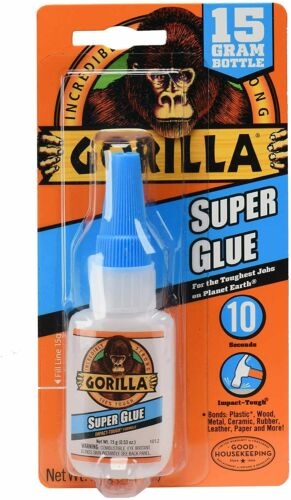
This is due to the fact that the glue needs time to cure, or harden, completely. During this curing process, the glue will become more brittle and less flexible. Cyanoacrylate adhesives are fast-acting and begin to set in seconds. However, it can take up to 24 hours for the glue to reach full strength.
Just keep in mind that it may take up to a full day for the glue to reach its full strength. So, if you need a quick fix or are working on a time-sensitive project, Gorilla Super Glue is a great choice.
How long does Scotch Super Glue take to dry?
While super glue is typically very quick-drying, there are a few factors that can affect the drying time of the glue, such as the type of glue, the surface it is being applied to, and the temperature and humidity of the environment. Super glue is an incredibly useful adhesive that can be used for a variety of purposes, from repairing broken items to bonding together different materials. In general, Scotch super glue takes about 10-25 seconds to dry.
How long does it take for Loctite Super Glue to dry?
In general, Loctite Super Glue will take about 10-30 seconds to dry. However, there are a few factors that can affect the drying time, such as the amount of glue used, the type of surface, and the temperature and humidity of the environment. Loctite Super Glue is a cyanoacrylate adhesive, which means it dries quickly.
How Does Super Glue And Water React?
When these monomers come into contact with water, they undergo a process called hydrolysis. When it comes to super glue, it is important to know how it will react with water. After all, you don’t want to accidentally glue your fingers together! This process breaks the bonds between the monomers, causing the super glue to lose its adhesive properties. Super glue is an adhesive that is made up of cyanoacrylate monomers.
How To Make Super Glue Dry Faster
With these tips, your super glue should be dry and strong in no time! Then press the two surfaces together and hold them in place for 30 seconds. Finally, keep the area warm and dry – a hair dryer on the low setting can help speed up the drying process. Next, apply a thin layer of glue to one surface and wait a few seconds for it to become tacky. Any dirt or moisture will prevent the glue from setting. First, make sure that the surfaces you’re bonding are clean and dry. When you’re in a hurry and need your super glue to dry fast, there are a few things you can do to speed up the process.
Use A Hair Dryer
Move the hair dryer back and forth over the area until the glue is dry. If you’re in a hurry and need your super glue to dry faster, using a hair dryer is a great way to speed up the process. Simply turn on your hair dryer to the hottest setting and hold it about 6 inches away from the glued area.
Add Baking Soda
When you add baking soda to super glue, it will help the glue to dry faster. The baking soda will absorb moisture from the air and help to speed up the drying process.
Increase Airflow
If you’re looking to make your super glue dry faster, there are a few things you can do to increase airflow. Another is to open up any windows or doors in the room to help ventilate it. Finally, you can try using a hair dryer on a low setting to help speed up the drying process. One is to use a fan to help circulate the air around the area where the glue is drying.
Why Does Super Glue Bond To Skin?
However, one of the most common questions about super glue is why it bonds to skin. It is typically used to bond together metal, glass, and plastic. Super glue is an extremely strong and fast-drying adhesive.
There are a few reasons why super glue bonds to skin so well. First, the glue contains a chemical called cyanoacrylate. This chemical is attracted to the protein in skin cells, which helps the glue to adhere.
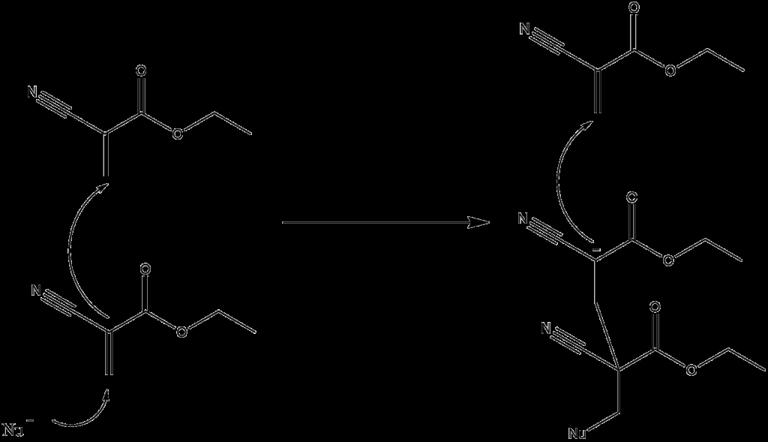
The glue contains tiny particles that can easily become lodged in the pores of the skin. Once the glue is on the skin, it is very difficult to remove. Another reason why super glue bonds to skin is because it is a very sticky substance.
If you have ever accidentally glued your fingers together, you know that super glue can be difficult to remove from skin. The best way to remove super glue from skin is to soak the area in warm water for a few minutes. This will help to loosen the glue and make it easier to remove.
How To Get Super Glue Off Skin
In this section, we will discuss some tips on how to get super glue off skin. If you have ever accidentally gotten super glue on your skin, you know that it can be a pain to remove.
How To Remove Super Glue From Skin Without Acetone
There are a few ways to remove it without using acetone. If those don’t work, you can try using a pumice stone or a toothbrush to scrub the area. If you find yourself with super glue on your skin, don’t panic! If that doesn’t work, you can try using a little bit of olive oil or nail polish remover. First, try washing the area with soap and warm water.
Debonders (Nitromethane)
There are two types of debonders: mechanical and chemical. Debonders are used to remove super glue from skin without acetone.
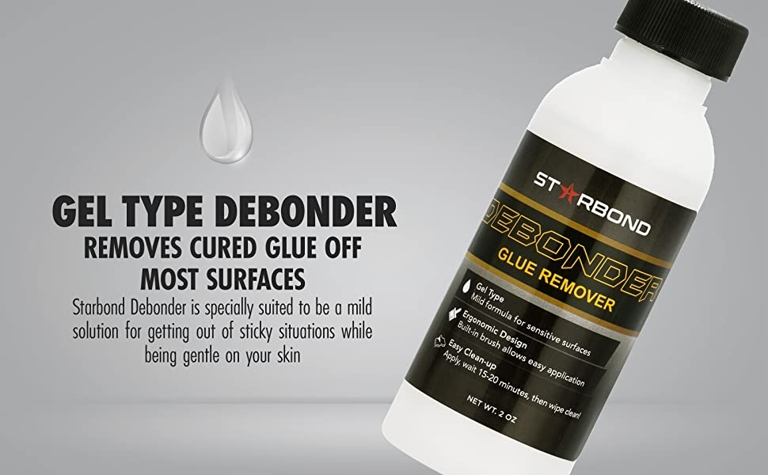
This can be done with a sharp object like a knife or a needle. Mechanical debonders work by breaking the bond between the super glue and the skin.
Chemical debonders work by dissolving the super glue. Acetone is a common chemical debonder.
If that doesn’t work, try using a chemical debonder. If the super glue is still present, try using a mechanical debonder. To remove super glue from skin without acetone, start by washing the area with soap and water.
Use Warm Soapy Water
You may also want to try using a cotton ball soaked in warm water to help remove the glue. This will help to break down the glue and make it easier to remove. If the super glue is still not coming off, you may need to use acetone. When it comes to removing super glue from your skin, one of the best things that you can do is to use warm soapy water.
Oils And Butter
This will also help to break down the glue and make it easier to remove. There are a few ways to remove super glue from skin without acetone. One way is to use oils or butter. This will help to break down the glue and make it easier to remove. Another way is to use a Q-tip or cotton ball soaked in nail polish remover.
Lemon Juice
Lemon juice is a natural solvent and can be used to remove super glue from skin without acetone. Rinse the area with warm water and soap to remove any residue. Simply apply lemon juice to the affected area and let it sit for a few minutes. Then, use a cotton swab or cotton ball to gently rub the glue off.
What Removes Super Glue
When it comes to removing super glue, there are a few methods that can be used depending on the surface that is glued. If super glue is on a non-porous surface like metal or glass, it can be removed with a razor blade or sandpaper. If super glue is on skin, it can be removed with acetone or nail polish remover. For example, if super glue is accidentally spilled on clothing, it can usually be removed with soap and water.
What is super glue?
Super glue can be used to bond metal, glass, plastic, and most other materials. It is also used in medical and dental applications. It is a strong, fast-drying glue that is used for many different purposes. Super glue is an adhesive made from cyanoacrylate. Super glue is available in different formulations, including gel and spray.
What is cyanoacrylate?
Cyanoacrylate adhesives are typically used to bond small, delicate items such as jewelry, eyeglasses, and electronic components. They are commonly known by trade names including Super Glue, Krazy Glue, and Loctite Quick Set 404. Cyanoacrylate is the generic name for a family of strong, fast-acting adhesives made with acrylic monomers. The adhesives are also used in medical and dental applications, where they are used to close wounds and to attach prosthetic devices to bone and tissue.
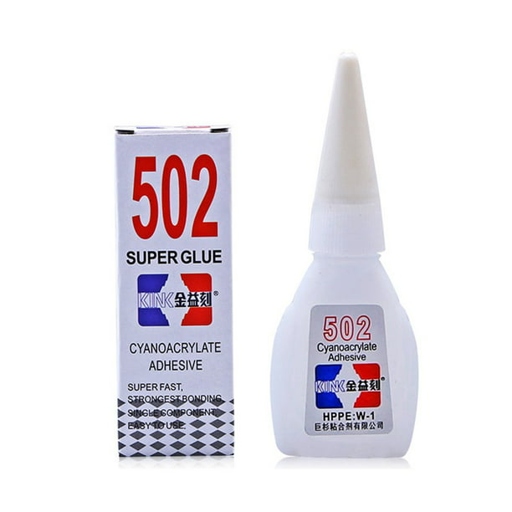
Cyanoacrylate adhesives are made by combining a cyanide compound with an acrylate ester. The surfaces are then pressed together and held until the adhesive sets. The adhesives are typically sold in small tubes or bottles, and the user applies the adhesive to one of the surfaces to be joined. The resulting adhesive is extremely strong and sets very quickly, usually in less than a minute.
The adhesives are also somewhat toxic, and care should be taken to avoid inhaling the fumes generated when the adhesives are used. Cyanoacrylate adhesives are very strong and can be difficult to remove once they have set.
Is cyanoacrylate super glue?
It is typically used for bonding metal, glass, and plastic. Cyanoacrylate super glue is one of the strongest and most durable types of super glue. Super glue is typically used for temporary repairs or for bonding two surfaces together permanently. It can also be used for repairing wood, ceramics, and fabric.
Does super glue dry in air?
Superglue can be used on many different materials, including metal, glass, plastic, and wood. It is a liquid that dries quickly, forming a strong bond between surfaces. Superglue is an adhesive made from cyanoacrylate.
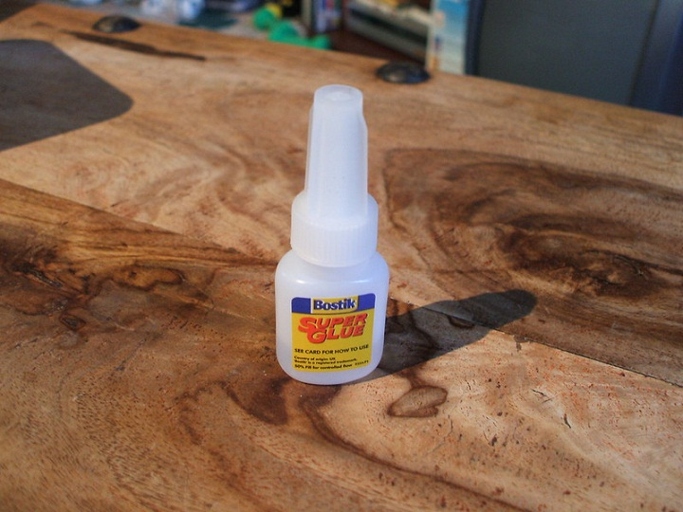
Superglue dries best in a humid environment. If you are trying to dry superglue in a dry environment, it will take longer for the glue to set. This is because the moisture in the air helps to cure the glue, making it stronger.
You can speed up the drying process of superglue by using a hair dryer or heat gun. Be careful not to overheat the glue, as this can cause it to become brittle.
If you need to remove dried superglue, you can try using acetone or nail polish remover. Once superglue has dried, it is very difficult to remove.
Why does superglue stick to almost everything?
This creates a strong bond between the two surfaces. Superglue will stick to almost any surface, including glass, metal, plastic, and even skin. Superglue is an adhesive made up of cyanoacrylate molecules. When two surfaces are brought into contact with each other, the molecules will bond to the surface of each object. These molecules have a strong tendency to form bonds with other surfaces.
What materials does super glue not work on?
This includes textured surfaces, porous surfaces, and wet surfaces. Superglue will also not work on surfaces that have been treated with a release agent, such as silicone. Superglue will not work on materials that are not smooth.
Frequently Asked Questions
1. How long does Super Glue take to dry?
Super Glue typically takes 24 hours to dry completely. However, you may be able to use the item sooner if it is not under stress.
2. How can I speed up the drying process?
There are a few ways to speed up the drying process of Super Glue. One way is to use a hair dryer on the low setting to help evaporate the glue. Another way is to apply pressure to the glued area.
3. Will Super Glue work on all materials?
Super Glue works best on non-porous surfaces such as metal, glass, and plastic. It can also be used on wood, but it is not as effective.
4. How long does Super Glue last?
Super Glue has a shelf life of about two years. Once it is opened, it should be used within six months for best results.
5. Can Super Glue be removed?
Super Glue can be removed from skin with soap and water. For other surfaces, you may need to use acetone or another solvent.
Final thoughts
Super glue is a household staple for many people. It is a fast-acting adhesive that can be used on a variety of materials. While super glue is typically dry to the touch within a few minutes, it can take up to 24 hours for the glue to cure completely. This is why it is important to read the instructions on the glue before use.